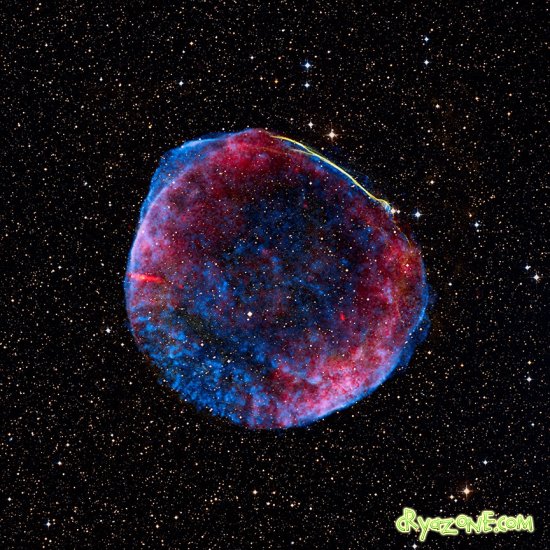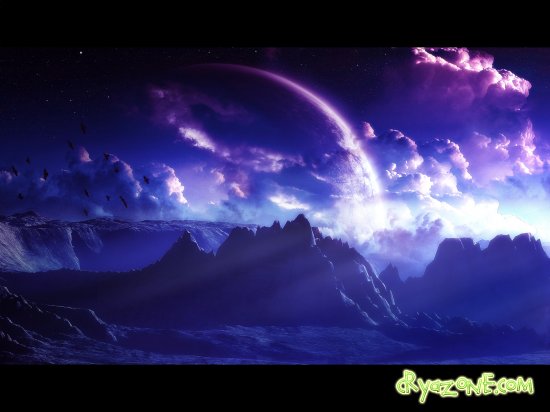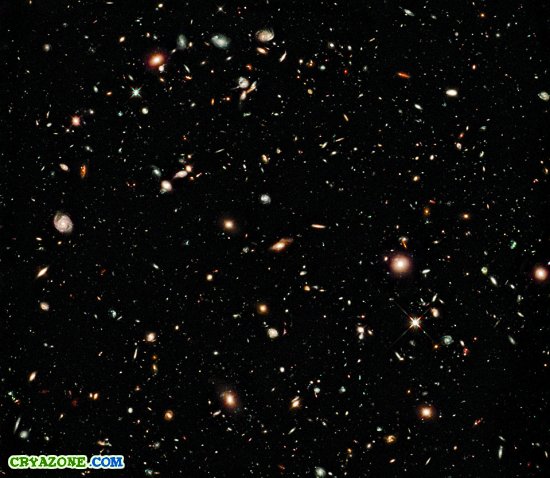Звезда SN 1006  Русский РусскийОписания вспышки Китайские и арабские астрономы оставили полное описание этого события. Согласно Сонгши, звезда появилась 1 мая 1006 года в созвездии Ди, восточнее от Волка и на один градус западнее от Центавра. По словам этого китайского астронома, звезда светила столь ярко, что ночью были хорошо различимы предметы. Некоторые источники говорят, что днём от её света падала тень. Египетский арабский астроном Али ибн Ридван в комментариях к Тетрабиблосу Птолемея отметил, что звезда была ярче Венеры в 2,5—3 раза. Бенедиктинские монахи монастыря Святого Галла подтвердили наблюдения ибн Ридвана. Остаток сверхновой Остаток сверхновой был идентифицирован с радиоисточником PKS 1459-41 в 1965 году с помощью радиотелескопа обсерватории Паркс. Через несколько лет были зарегистрированы источники оптического и гамма-излучения. В настоящее время диаметр газопылевого облака составляет около 60 световых лет, соответственно, скорость распространения вещества, сброшенного звездой, оценивается в 10 млн км/ч.  English EnglishHistoric description The Chinese and Arabic astronomers have left the most complete historical descriptions of the supernova. According to Songshi in the section of 56 and 461, the star was seen on May 1, 1006 which appeared to the south of constellation Di, east of Lupus and one degree to the west of Centaurus. The size of the visual explosion was half that of the moon, and shone so brightly that objects on the ground could be seen at night. During September of 1006, it went below the horizon. By December, it was again sighted in the constellation Di. The Chinese astrologer Zhou Keming, who was on his return to Kaifeng from his duty in Guangdong, interpreted the star to the emperor on May 30 as an auspicious star, yellow in color and brilliant in its brightness, that would bring great prosperity to the state over which it appeared. The Egyptian Arabic astronomer and astrologer, Ali ibn Ridwan, writing in a commentary on Ptolemy's Tetrabiblos, has left us another historical description of the supernova. He says that the object was 2-1/2 to three times as large as the disc of Venus[clarify], and about one-quarter the brightness of the Moon, and, like all other observers, says that the star was low on the southern horizon. Monks at the Benedictine abbey at St. Gallen broadly corroborate bin Ridwan's observations as to magnitude and location in the sky, additionally writing that "[i]n a wonderful manner this was sometimes contracted, sometimes diffused, and moreover sometimes extinguished." This last is often taken as proof that the supernova was of Type Ia. Some sources state that the star was bright enough to cast shadows; it was certainly seen during daylight hours for some time, and the modern-day astronomer Frank Winkler has said that "in the spring of 1006, people could probably have read manuscripts at midnight by its light." There appear to have been two distinct phases in the early evolution of this supernova. There was first a three-month period at which it was at its brightest; after this period it diminished, then returned for a period of about eighteen months. Most astrologers interpreted the event as a portent of warfare and famine. A petroglyph by the Hohokam has been discovered in White Tank Mountain Regional Park which may be the first known North American representation of the supernova. The Supernova Remnant of SN 1006 The associated supernova remnant from this explosion was not identified until 1965, when Doug Milne and Frank Gardner used the Parkes radio telescope to demonstrate that the previously known radio source PKS 1459-41, near the star Beta Lupi, had the appearance of a 30-arcminute circular shell.[3] Over the next few years, both X-ray and optical emission from this remnant were also detected. The supernova remnant of SN 1006 has an estimated distance of 2.2 kiloparsecs, making it approximately 20 parsecs in diameter. As expected for the remnant of a Type Ia supernova, no associated neutron star or black hole has been found. 18 сентября 2008
Рейтинг:
|
Комментарии 9
- О журнале
- Правообладателям
- Контакты
- Новые публикации
Cryazone — это место, где каждый найдёт что-то интересное и полезное: от советов по уходу за собой и здоровью, до вдохновения для творчества, обзоров техники и идей для отдыха. Мы публикуем только живые статьи — без воды, с пользой и интересом.
У нас — красота и здоровье, стиль жизни, спорт, юмор, животные, творчество, космос и всё, что делает жизнь насыщенной. Присоединяйтесь и вдохновляйтесь каждый день!














